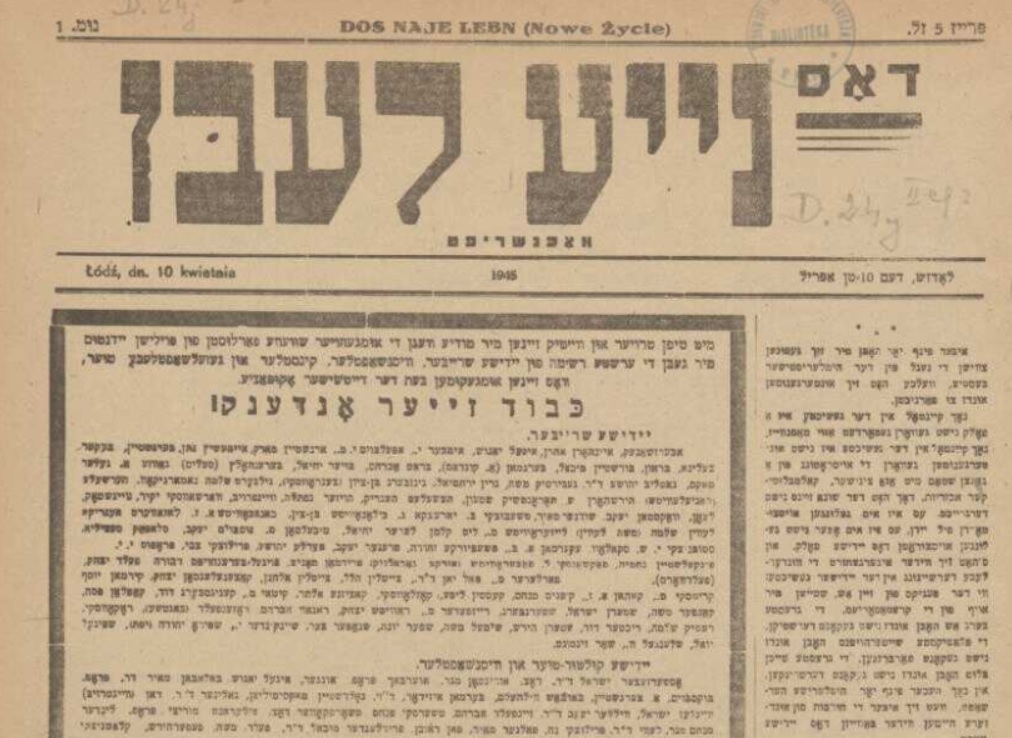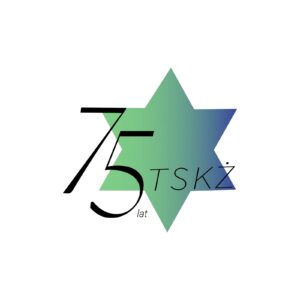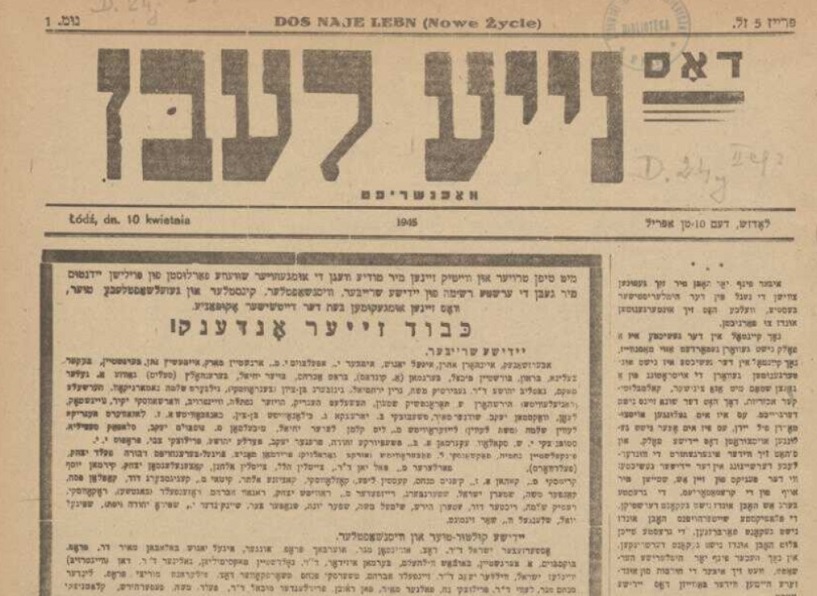Thanks to the commitment of the men and women of letters, the first Jewish newspaper began circulating just a couple weeks after the Red Army marched into Lublin. The Lublin period of ‘The Bulletin’, which was the forerunner of the subsequently released ‘Dos Naje Lebn’, began in November 1944 and lasted until January 1945.
After the liberation of Lublin, members of the Jewish Society of Writers, Journalists and Artists obtained a permission to publish the Jewish periodical from the Minister of Agitation and Propaganda, Stefan Matuszewski, and Prime Minister Edward Osóbka-Morawski. The great willingness to spread the Jewish writings manifested by the members of the Jewish Society of Writers is demonstrated by their huge input in the publication of the bilingual ‘Bulletin’. The Polish version of the periodical was typewritten, while the Jewish version, due to the unavailability of fonts with Hebrew letters, had to be rewritten multiple times using carbon paper.

In autumn 1944, when the Central Committee of Jews in Poland was founded, “The Bulletin” was supposed to become the Committee’s press title. This obviously resulted in the need of increasing of the newspaper’s circulation. Therefore, a search for a properly equipped printing house started. At the beginning of January 1945, the news about a Jewish print shop located in Łódź reached Lublin, and the entire editorial team set off on a trip to Łódź. However, instead of the print shop we had imagined in our dreams, we found only its ruins. Heaps of rubble […], and instead of Hebrew letters, a pile of frozen sand, junk and scrap metal. – reported Efroim Siedlecki, one of editors. However, the delegates did not plan to go away empty-handed, so the men began sifting through the ruins of the printing house destroyed by the Germans, where they eventually managed to find Jewish fonts. Later on the same day, the newly discovered treasures were transported to the Committee’s local office in Łódź at 32 Narutowicza Str. Members of the editorial team decided to stay in Łódź and transfer the Committee’s publishing activities there.

In March 1945, the Chair of the Jewish Union of Writers, Jonas Turkow, proposed that the Central Committee of Jews in Poland, allocates the amount of 20 thousand of Polish zlotys for the new version of the bilingual daily paper. The idea was enthusiastically welcomed by the Committee’s board members, who started discussing the possible title of the first Jewish newspaper
at the next Committee meeting. Entries such as “Befrajung” (Yiddish for “Liberation”), “Frajhajt” (Yiddish for “Freedom”), or “Benajung” (Yiddish for “Freedom”) were surpassed by the winning catchphrase “Dos Naje Lebn” (Yiddish for “New Life”).

The first fully-fledged periodical in Yiddish was published on 10 April 11945 in Łódź. The white and red flags are up again floating over Polish cities, and proclaiming freedom to all – one can read in the “Editorial” column – We are now building our free, brand-new life in a democratic Poland. […] In this new beginning, our newspaper will be like a torch, lighting the way and giving us strength and encouragement. The first issue of “Dos Naje Lebn” published a list of victims of the German genocide, including Jewish scholars, writers and artists. The newspaper also published a statement from the first Chair of the Central Committee of Jews in Poland, Emil Sommerstein, who emphasised the important role of the new daily newspaper in his article titled “We Would Like to Live and We Will”.
“Dos Naje Lebn” covered a wide range of topics that were both typical of, and pertinent to post-war reality. The newspaper, which covered such areas as repatriation, emigration opportunities and the rebuilding of social and cultural life, quickly became the primary source of information for the Jewish population in Poland. Thanks to the ads posted in the newspaper, many readers found their missing family members. The newspaper published accounts of witnesses of the Holocaust and articles about the trials of Nazi criminals. “The New Life Nowe” also promoted reviving Jewish culture, by publishing poetry and stories in Yiddish.

At first “Dos Naje Lebn” used to be published as a daily paper, but over time, the regularity of its publication has decreased. After 1946, the newspaper gradually changed its character i.e. the communist government started to control its content, which resulted in the avoidance of topics inconvenient for the authorities. The editorial staff of “The New Life” ceased publishing the newspaper in 1950. The reason for this was the centralization policy pursued by the authorities and their desire to subordinate Jewish media to communist propaganda.
“Dos Naje Lebn” was superseded by the new periodical “Folks Sztyme”, which became the major Jewish press medium in the People’s Republic of Poland. The character of the “Voice of the People” which had been published by the Social and Cultural Association of Jews in Poland since 1956, was much more aligned with the political objectives of communist Poland.

By Marta Rydz



